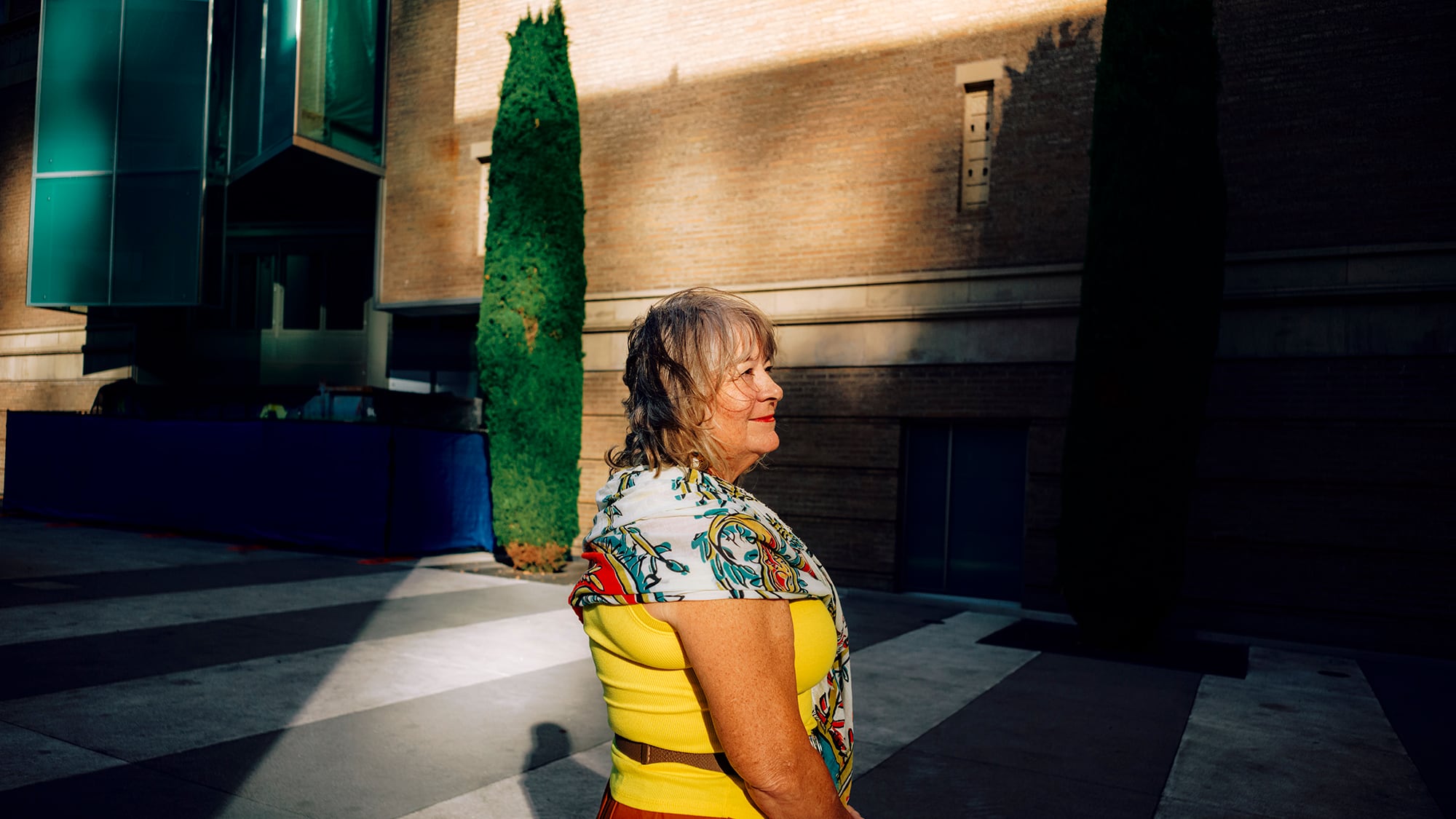After Paulla Dacklin retired from her career as an art teacher, she poured her energy into volunteering as a Portland Art Museum docent. She led 30 tours a year for students, guiding them through the museum and helping explain the works on display. Dacklin, 71, also met with fellow docents for continuing education on Mondays, and even exhibited her own art at a docent gallery show.
When the pandemic ebbed and the museum reopened, it felt strange that she never heard from the museum to set up her touring schedule—especially when Portland Public Schools was fully operational.
“It became apparent that we were kind of on hold, and we couldn’t figure out why,” Dacklin says.
The picture clarified on Aug. 22 when Dacklin and all 175 Portland Art Museum docents were, essentially, dumped via email.
The letter from museum management—subject line: “Future Directions”—explained that the museum was doing away with the approximately 40-year-old docent council structure and bringing in paid “learning guides” recruited from local colleges. Former docents will be folded into a new museumwide volunteer program that includes educators, greeters and coat-check helpers.
“The message is really clear that the services of a group of older, retired educators are no longer needed,” Dacklin says.
The shift comes as the museum is getting a new look inside and out with its $110 million Mark Rothko Pavilion now under construction. It has also left hard feelings and highlighted a central tension facing museums across the country: Does reflecting the communities they serve mean reducing the role of senior white women, who made up a large proportion of the docent council?
Brian Ferriso, PAM’s executive director and chief curator, tells WW the docent council is not being discontinued. Rather, it is “evolving to meet the needs of the community.” Change should not have come as a surprise because the docent council has been in a constant state of evolution throughout his 17 years at the museum, he says.
“It’s been a fluid, fluid moment,” Ferriso says. “I’m not sure what people hear, and I apologize if people heard it that way. But we had many meetings beforehand discussing this.”
PAM’s overhaul of its docent program is the latest in a national trend.
The Oakland Museum of California disbanded its program in December in order to diversify its volunteer force. Museums in Denver and Birmingham, Ala., have also moved to paid college-guide programs. When the Art Institute of Chicago dismissed its docents and replaced them with a fleet of younger, more diverse “paid educators” in fall 2021, a flurry of media coverage (including scathing missives in conservative outlets) was so intense that the museum hired extra security.
In August 2020, the website Slate ran an article titled “Museums Have a Docent Problem” that opened with the cringey scene of an older white woman guiding a group of young Black and Asian visitors through an exhibit of the works of Jamaican American artist Nari Ward at Boston’s Institute of Contemporary Art. (The girls asked, “What’s Black Power?” It got even more awkward from there.)
Those cultural tremors weren’t lost on PAM. Both the pandemic and construction have been opportunities for the museum to “reset and reevaluate,” says Stephanie Parrish, director of learning and community partnerships. As was an embarrassing incident in March when a museum staffer (not a docent) asked a young mother to remove her baby from its traditional basket carrier—while she toured an exhibit showcasing a Native American artist. The museum apologized, further trained its staff in cultural sensitivity, and changed its backpack policy.
The word “docent” itself is now kaput at PAM: “While we understand that the word docent has warm, positive associations for some, we have also received feedback that the term is confusing and unclear,” Ferriso and Parrish wrote in the August email to former docents.
The Oregon Historical Society and the Oregon Jewish Museum and Center for Holocaust Education have also updated their programs to move away from the traditional docent model.
One former docent, who declined to be named, didn’t feel blindsided like Dacklin did by changes to the council. Based on what happened to the docents in Chicago and all the equity consultants PAM brought in, she had felt the “foreboding” for a couple of years. She laughed at the idea of going back to PAM as a volunteer educator: “They burned their bridge.”
Dacklin feels similarly alienated. “I’m heartbroken,” she says, her voice brimming with emotion. “Will I go back to the museum and volunteer? I don’t know anyone that’s going to do it. But I don’t know everyone.”
Count Connie Bushnell in. She plans to continue volunteering at PAM and still enjoys meeting her fellow former-docent friends for lunch. Bushnell, a retired teacher with a degree in art history, served on the committee that consulted on the restructuring and the email.
“I knew it would cause some stress for people, but I think it’s important that everyone feel welcome when they walk in the doors of the museum,” says Bushnell, 66. “Even good change is difficult.”
The staff leading tours looks quite different as of last week, when the pilot group of four paid “learning guides” started their training. The museum is recruiting from Portland Community College, Portland State University and Lewis & Clark College. They will give tours of the museum to students two days a week.
Up on the walls right now is the exhibit Black Artists of Oregon, featuring work by 69 artists spanning from the 1880s to today. It is on view through March 17. Next month at this time, museum staff will be getting ready to mount Africa Fashion, an exhibit from the Victoria and Albert Museum in London.
Former docent Michele Sabatier was sad to see the docent council structure go, but says it was time the group diversified. She made it her goal as a docent to give people the tools they need to engage with any art at any museum anywhere. (Hot tip from Sabatier: When looking at portraits, try to determine the subject’s hobbies and what they might dream about.)
She misses the school tours and the Monday lectures where the docents saw sneak previews of exhibits and heard speeches by artists and curators.
“That always felt really special,” she says. “It was like being back in school.”
It was also part of the problem—docents had to devote a year to training, which was a huge barrier to entry for volunteers who don’t have that kind of time and flexibility, Sabatier says. She says when the pandemic hit, it was “a blessing in disguise” for the museum to have time to do some self-examination.
She plans to keep volunteering at the museum—and is open to any changes that will make it more welcoming.
During one of her first docent tours for students, Sabatier talked to a father who said he always felt like he wasn’t smart enough to come to a museum.
“It broke my heart when he said that,” she says. “No one should feel too intimidated to come in and look at art.”

